Struggling to find that perfect Chenna Recipe to make your popular Bengali and other Indian sweets at home? Well, your plight ends here. I have shared a foolproof method to make Chenna at home, that too with ease. All you require is the basic ingredients and by following this step-by-step method, you can easily make a batch of this essential ingredient at the comfort of your home.
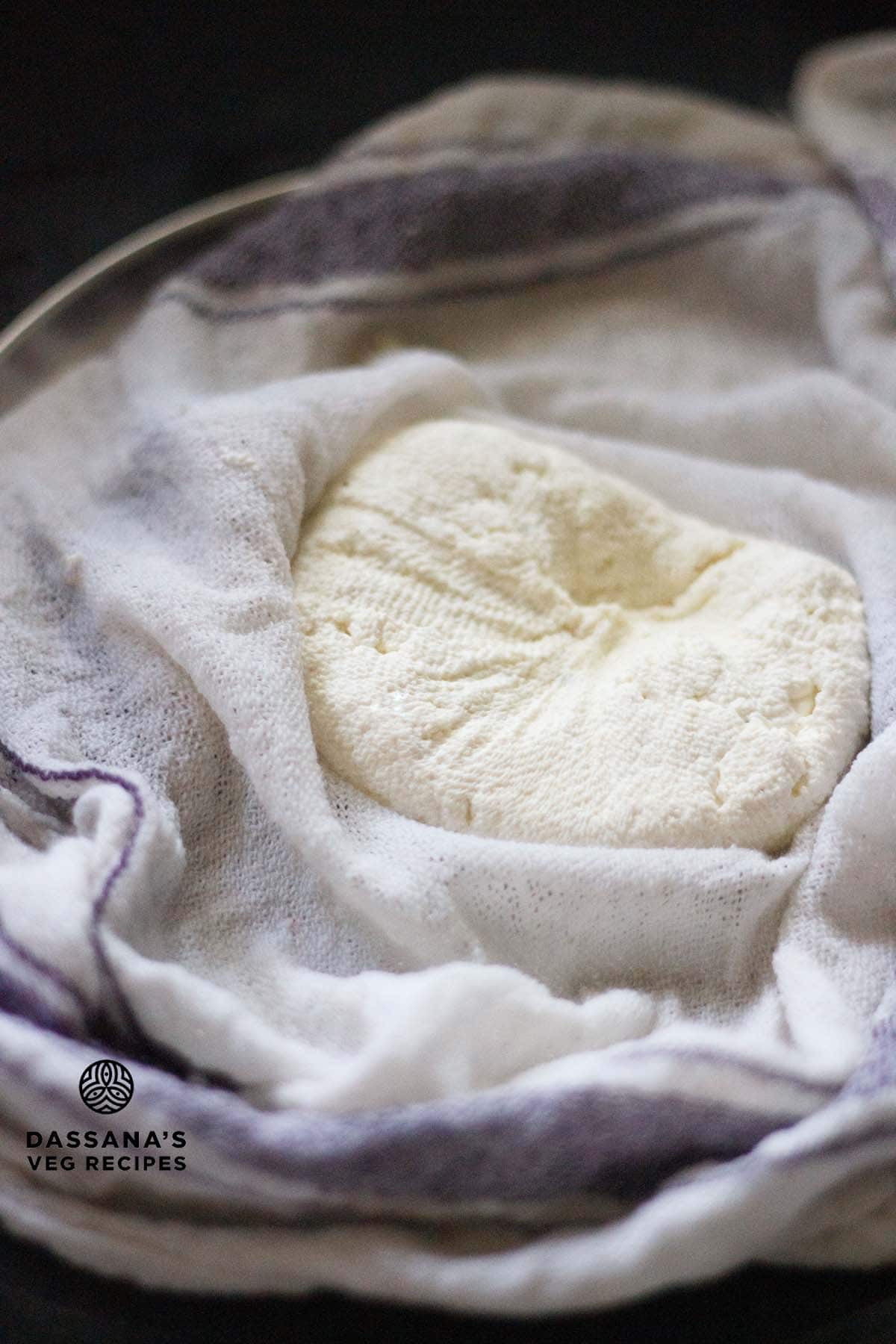
About Chenna
Chenna, a fresh and unripened curd cheese, is a fundamental ingredient in a variety of beloved Bengali and Indian sweets.
Made by curdling milk with an acidic agent like lemon juice or vinegar or curd, chenna serves as the base for many traditional desserts, including the iconic Rasgulla, Sandesh, Rasmalai, Kalakand and Cham Cham.
The process of making chenna is simple yet requires precision. Whole milk is brought to a boil and then curdled by adding the acidic substance.
Once the milk solids separate from the whey, the mixture is strained through a muslin cloth to collect the curds.
The curds or coagulated milk solids are then washed under cold water to remove any residual acidity, ensuring a neutral flavor. After squeezing out excess moisture, the resulting chenna is ready to be used.
This fresh chenna is soft and crumbly, perfect for kneading into a smooth, pliable dough for sweet making.
About This Method
I usually follow this quick method, where I keep a weight on the chenna for 6 to 7 minutes, rather than keeping the chenna tied up in the muslin for 30 minutes or more.
Usually, from 1 liter of full-fat milk, I get 350 grams of chenna. But this yield will differ depending on the quality of milk and the fat content in the milk.
Also, remember to use fresh milk. Do not refrigerate the chenna as this changes the texture of the sweets. Keep in mind to prepare the amount you require. So accordingly, you can make the chenna from ½ liter to 2 liters milk.
Versatility of Chenna
The versatility of chenna extends beyond Bengali sweets to other regional Indian delicacies.
In Odisha, chenna is essential for preparing Chenna Poda, a baked sweet where the chenna is mixed with sugar and cardamom before being baked to a golden brown, resulting in a caramelized, flavorful dessert.
Chenna’s role in Indian sweets is not only about flavor and texture but also about cultural and regional identity.
Each region has its unique methods and recipes, often passed down through generations, making chenna-based sweets a cherished part of India’s culinary heritage.
The skillful transformation of this simple cheese into a myriad of delightful sweets showcases the ingenuity and artistry of Indian confectionery.
Whether enjoyed during festivals, celebrations, or as everyday indulgences, chenna-based sweets continue to bring joy and sweetness to countless lives.
How to make Chenna
1. First, bring 1 liter fresh whole milk to a boil in a saucepan.
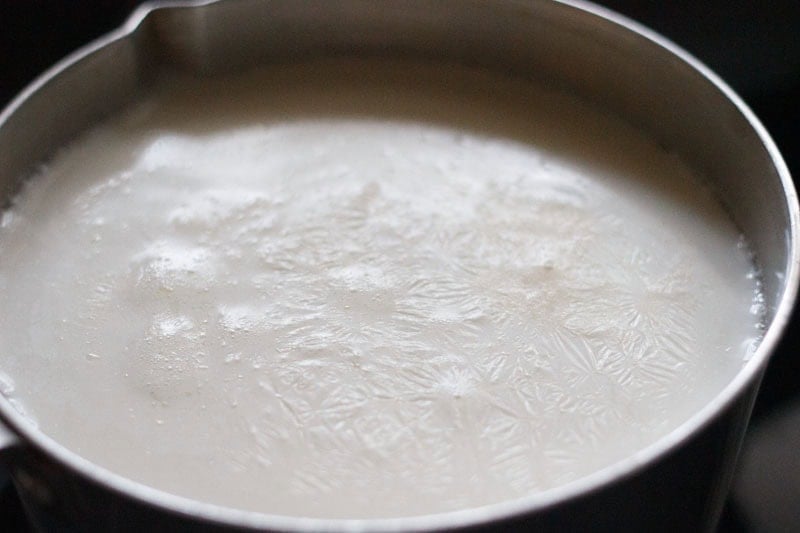
2. Then, add 1 tablespoon lemon juice or vinegar.
You can also add 2 to 3 tablespoons yogurt, instead of lemon juice or vinegar.
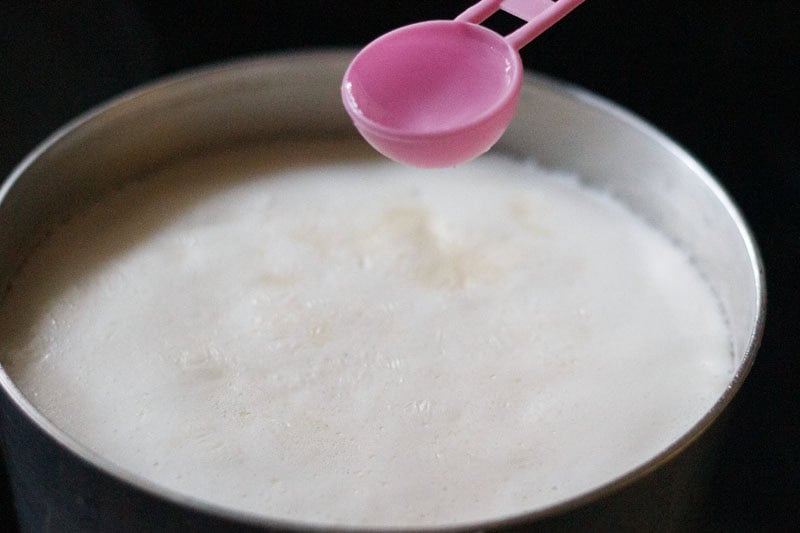
3. Stir and mix thoroughly and you will see the milk getting curdled in a few seconds. Ideally, the milk should get curdled at once or in a few seconds, after you stir in the acidic ingredient.
Keep extra lemon juice ready, in case the milk does not curdle. Remember not too add too much.
1 tablespoon of lemon juice or vinegar is sufficient for about 1 liter of whole milk. In case you need to add more, then add about ½ tablespoon more.
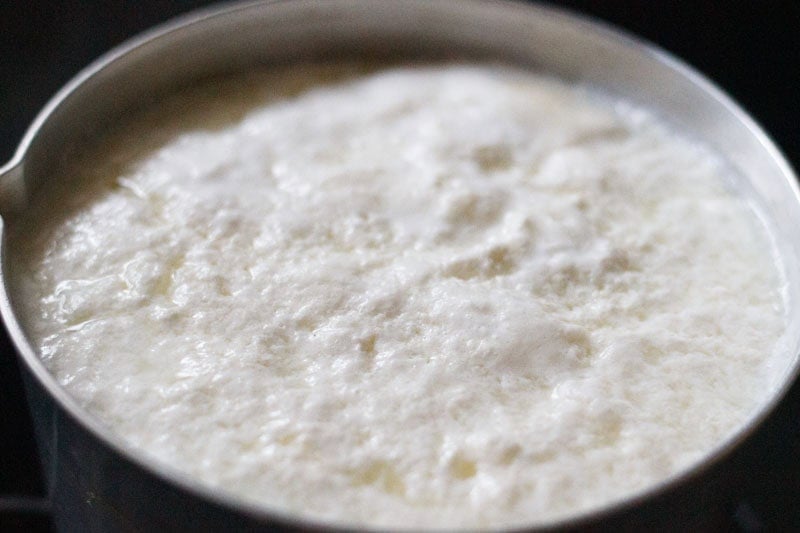
4. When you see the greenish whey, pour the curdled milk in a pan or bowl lined with a thin cotton napkin or muslin cloth. You can also use cheese cloth.
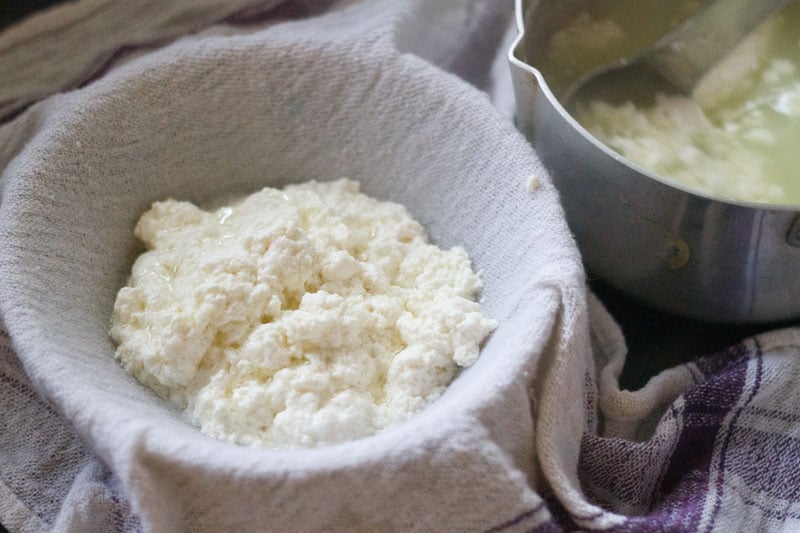
5. Once you are done adding all the curdled milk, bring together the edges of the cotton napkin or muslin cloth and gently squeeze out the remaining whey from it.
Take care as it will be hot. The greenish whey is rich in nutrients and can be added to gravies, pulaos, biryanis or doughs of rotis/chapatis and breads.
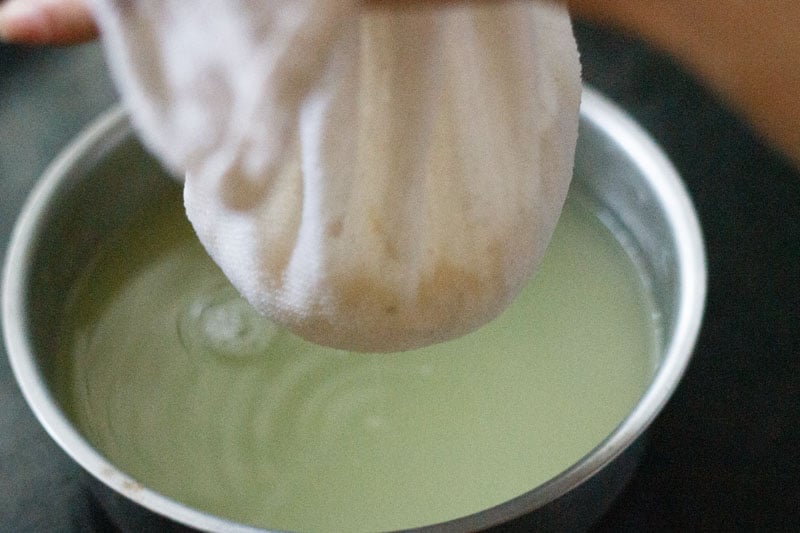
6. Rinse the collected bundle of chenna in water. This will get rid of the after taste and smell of the acidic ingredient.
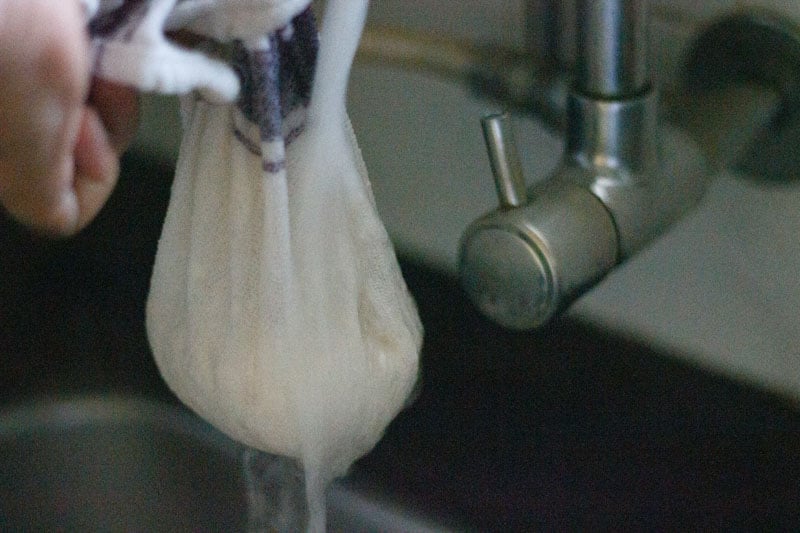
7. Keep a heavy weight on the bundle for 6 to 7 minutes. Don’t keep for a long time as you don’t want all the moisture to be drained.
If you have time, then you can also tie and hang the bundle for 30 minutes to 1 hour.
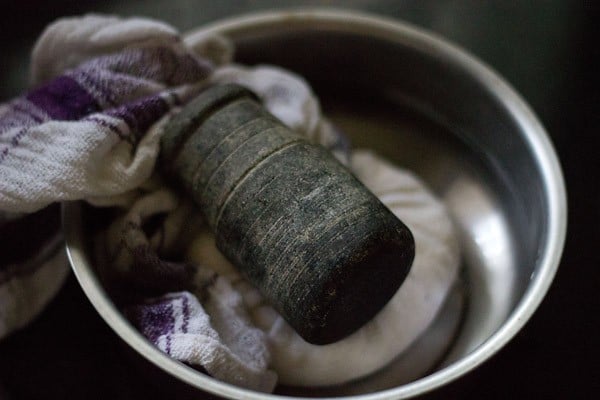
8. Later, open the muslin and gently remove the chenna. You could make make Bengali sweets straightaway from the fresh chenna.
If not using immediately, place the chenna in an airtight container in the refrigerator for 1 to 2 days.
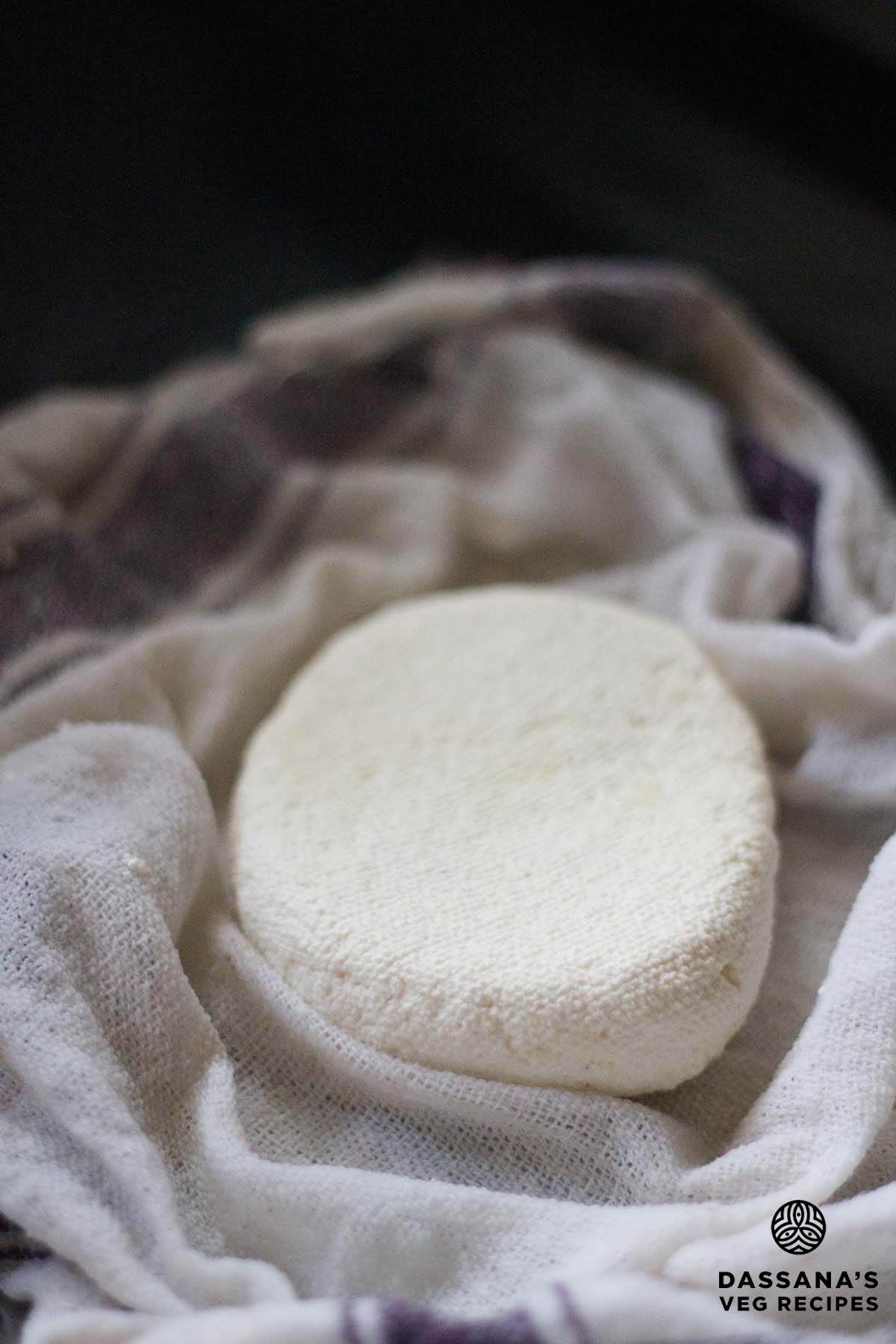
Chhena Vs Paneer
I make both chenna and paneer by the same method. Chenna is the coagulated milk solids and paneer is the coagulated solids which has been pressed more and thus sets firmly. The former is more moist than the latter.
Chenna is also very soft, loose and crumbly, while Paneer is not crumbly and has a firm tight texture. Chenna has more of the whey than paneer, where all the whey has been strained.
Unlike Chenna, that can only be crumbled, Paneer can be diced or cubed firmly with separate pieces.
Expert Tips
- Clean utensils: Make sure that all your cooking tools – such as pans, bowls, spoons, strainers, cheesecloth, and napkins – are thoroughly cleaned.
- Milk selection: Use whole milk for the best results, as skimmed or low-fat milk won’t work effectively in this recipe.
- Using lemon juice: Use freshly squeezed lemon juice rather than bottled juice for better flavor.
- Alternatives to lemon juice: You can substitute lemon juice with white distilled vinegar, apple cider vinegar, or curd (yogurt).
- Reusing leftover whey: The nutrient-rich greenish whey can be added to gravies, pulaos, biryanis, or used in dough for rotis, chapatis, and breads. But note that the whey will be tangy, so whatever you add it in, the resulting dish will be tangy.
FAQs
Chenna is made by curdling milk with an acidic agent like lemon juice, vinegar, or curd. Whole milk is boiled, and the acid is added to separate the milk solids from the whey. The milk solids are then strained using a muslin cloth or strainer, rinsed to remove the acidic taste, and pressed lightly to drain excess water. The resulting soft, crumbly curd is chenna.
Chenna is soft and crumbly, typically used in making sweets like rasgulla, sandesh, etc. Paneer, on the other hand, is firmer as it is pressed for a longer time to remove more moisture, making it suitable for savory dishes like curries and stir-fries.
Whole milk is ideal for making chenna as it has a higher fat content, which yields better texture and flavor. Skimmed or low-fat milk does not produce good results.
Chenna is a rich source of protein and calcium, promoting muscle and bone health. It is also easy to digest, making it suitable for people of all ages. Additionally, it provides essential nutrients like vitamins A and D, contributing to overall health.
More Do It Yourself Recipes!
Gluten Free Recipes
DIY & Collections
DIY & Collections
Please be sure to rate the recipe in the recipe card or leave a comment below if you have made it. For more vegetarian inspirations, Sign Up for my emails or follow me on Instagram, Youtube, Facebook, Pinterest or Twitter.
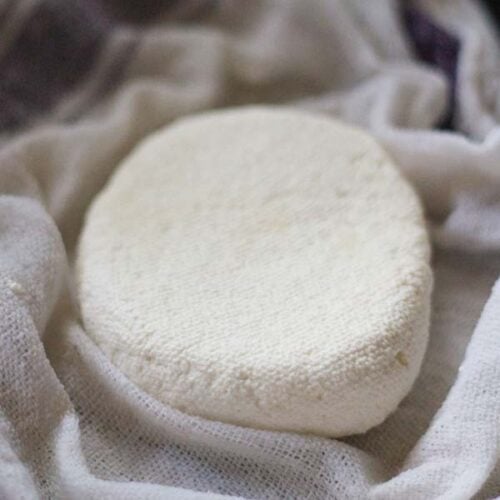
Chenna Recipe | How To Make Chhena
Ingredients
ingredients:
- 1 litre whole milk
- 1 tablespoon vinegar or 1 tablespoon lemon juice or 2 to 3 tablespoon yogurt (curd or dahi) – add more if required
materials required:
- 1 saucepan – medium-sized
- 1 clean cotton cloth or cheese cloth or muslin
- a heavy weight like a pestle or a heavy bowl or plate
Instructions
- First bring the milk to a boil in a saucepan.
- Reduce heat to medium or medium-low.
- Next add lemon juice or vinegar or yogurt. Stir and mix thoroughly and you will see the milk getting curdled.
- Ideally the milk should get curdled at once after you stir the lime juice or vinegar. Just keep extra lime juice ready with you, in case the milk does not curdle.
- When you see the greenish whey, pour the curdled milk in to pan lined with a thin cotton napkin or muslin. You can also use cheese cloth.
- Once you are done adding all the curdled milk, then bring together the edges of the cotton napkin or muslin and gently squeeze out the remaining whey from it.
- The greenish whey is rich in nutrients and can be added to gravies or to make rotis/chapatis and even pulaos, bread doughs.
- Rinse the collected bundle of chenna in water. This will get rid of the after taste and smell of either the lemon juice or vinegar.
- Keep a heavy weight like a mortar or a plate on the chenna bundle for 6 to 7 minutes.
- Later remove the chenna and then use it accordingly to make sweets like sandesh, cham cham, rasmalai and rasgulla.
Notes
- Use whole milk. Skimmed milk or low fat milk won’t work well.
- For the lemon juice, use juice squeezed from fresh lemons and not bottled juice.
- Opt to use white distilled vinegar or apple cider vinegar or curd (yogurt) instead of lemon juice.
- Ensure that all your pans, bowls, spoons, strainers and cheesecloth, napkins etc are clean.
Nutrition Info (Approximate Values)
This homemade Chenna recipe from the archives was first published in July 2014. It has been updated and republished on November 2024.
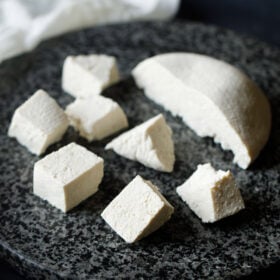
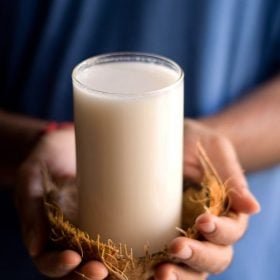
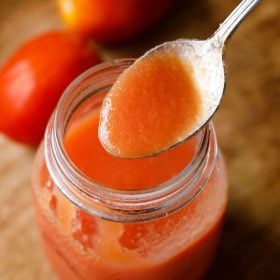
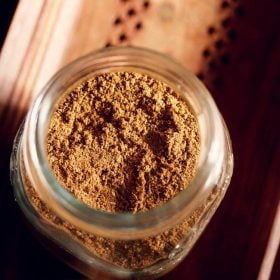
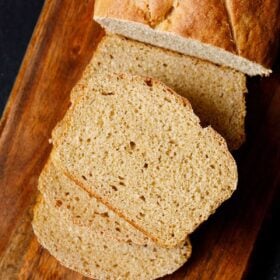
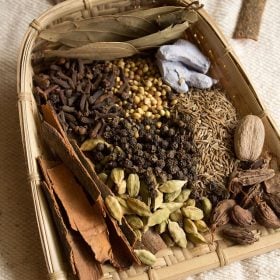
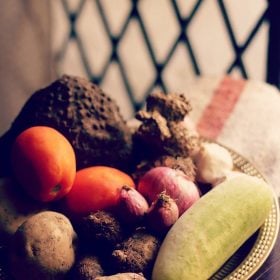
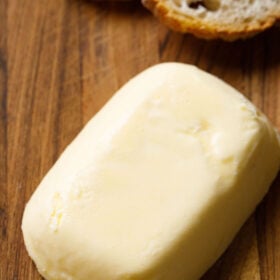








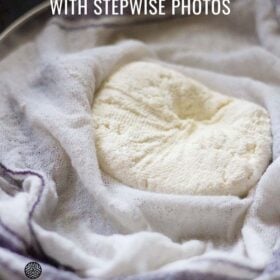
Hi Dassana,
I made rasgulla with the channa! But somehow when i was pressing the chenna it was not mixxing properly! I tried several times! I squeezed the water from channa and it turned so hard! What was the problem?
Sudeshna, looks like the chenna mixture got cooked too much. thats why it has become hard.
Hi dassana can u please give recipe of chenna poda a odiya sweet which is basically baked chenna
pallavi, for this year i have made a list of many regional recipes and chenna poda is in that list. so will add the recipe.
Made rasmalai today using this chenna recipe…they turned out to be probably the best in London! Thank you for the recipe !
welcome deepti. glad to know this.
Nice Recipe.
I would love to be on your mailing list, please, I love these recipes!!
Thank you
thanks teresina. you can subscribe on this link – http://mad.ly/signups/85092/join
both paneer and chenna have same preparation method.then what is the difference between paneer and chenna?
raji, chenna is more moist than paneer. in paneer lot of moisture is drained out. preparation method looks similar but the time duration for which weight is kept is different for paneer and chenna.
can we prepare chenna also like making paneer in microwave oven?pls reply me.i want to try this.
yes you can prepare.
Thank you very much for chenna recipe, i need to know how to prepare soft Rasgoola.
Thank you
Narmada
welcome narmada. honestly speaking, i am still struggling to get the perfect rasgoolas. i have tried so many times and every time something or other has gone wrong. either the rasgoola break or become hard or become too soft. i am still trying to perfect the recipe.
Hi. All receipes are really very easy. After reading your blobs working in kitchen is easy. All family members r enjoying good receipes. Thank you very much.
welcome monali. glad to know that recipes are helping you in kitchen.
Yummy recipes…. I want you to share veg gravy manchurian recipe
thanks rimmy. veg manchurian gravy recipe link is below:
https://www.vegrecipesofindia.com/veg-manchurian-veg-manchurian-gravy/
can we store the whey in refrigerator?If so then for how many days it can be stored?
better to consume the whey fresh. if storing than store just for a day and not more than that.
hi dassana!
i love this blog and learnt a lot. From tommorow i will start my adventure in kitchen.
i loved the fact and you have so many healthy recipes and you use organic stuff.
have you ever heard of makke ki kheer( kheer of sweet corn)
my dadi used to make it.
it was awesome.
thanks akansha. i have had sweet corn kheer. my mom used to make. sometimes i also make, but not taken pics and added the recipe.
haha..you know everything.
i really hope i keep learning from your blog and you have all the health and motivation to fill this blog up.
thanks.
akansha
welcome akansha.